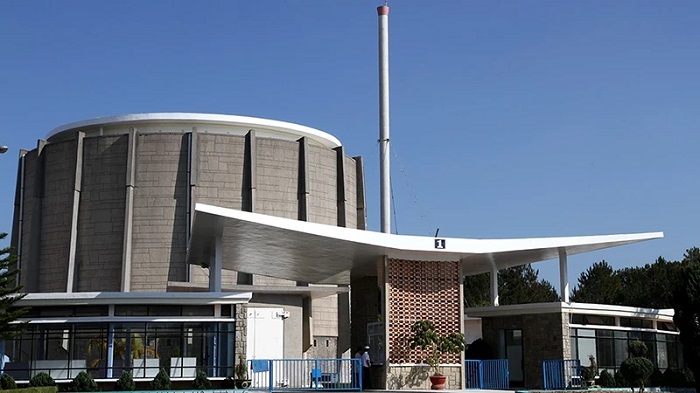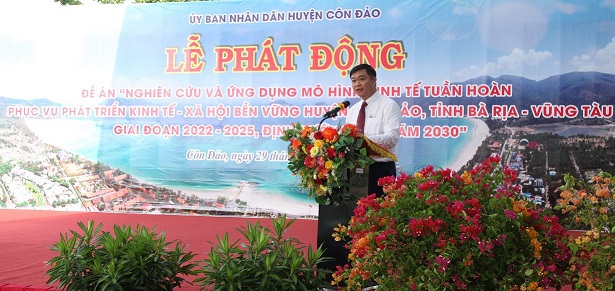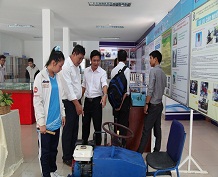
The latest decisions of the Party Central Committee at the
end of November and the resolution of the National Assembly on November 30,
2024, have brought the country into a particularly vibrant atmosphere, showing
signs of a revolutionary transformation period. Of which, the resolution on
nuclear power development has received widespread public support.
To ensure the safety of the national nuclear power programme
Following the COVID-19 pandemic, although the world situation is still difficult, Vietnam is considered one of the few economies with relatively high and stable growth. However, forecasts after the suspension of the nuclear power project in 2016 showed that the implementation of the 8th Power Plan to 2030 is at risk of not achieving its target, despite efforts to rapidly increase renewable energy sources.
Internationally, at the COP28 Summit in 2023, nuclear power was recognised as an important source of green electricity. In that context, the Party and State decided to restart the Ninh Thuan nuclear power project to contribute to ensuring energy security, realising the dual goal of economic and social growth to become a developed country by 2045 while moving towards the net-zero goal by 2050 as committed at COP26.
Despite great expectations, many people still question the ability to ensure nuclear safety. The most important goal of nuclear power is to prevent accidents that cause radioactive releases that affect the environment and human health. Typical examples of widespread pollution are the two nuclear accidents in Chernobyl (Ukraine) and Fukushima (Japan).
The Chernobyl accident occurred on April 26, 1986. During a test by the operating team, when they reduced the reactor power to a very low level, the unit went into a state of loss of control with a positive critical reaction causing the power to skyrocket. The reactor core melted due to the loss of cooling water and exploded. This type of reactor did not have a solid concrete-steel design, so all the radioactive substances — equivalent to 1.4x1013 Mega Beckeren — were released into the environment, causing very serious pollution over an area of 10,000 km2. Twenty-nine employees and firefighters died during the rescue operation.
The accident was classified as level 7, the highest level, and still has environmental consequences to this day. The Fukushima incident occurred due to the earthquake-tsunami double disaster on March 11, 2011, causing a power outage of the cooling pumps, leading to the meltdown of the reactor cores in the operating units and a hydrogen explosion in the operating level above the reactor building's protective block. The consequence was a fairly serious release into the environment, with the total amount of radioactive gas equal to about 1% of that of the Chernobyl incident. Although no one died, the Fukushima incident was still classified as a serious level 7 accident.
The two incidents occurred due to different causes, but the human factor is still the most important. In the Chernobyl incident, the staff subjectively operated in violation of safety regulations; on the other hand, there were flaws in the construction design because there was no solid protective building outside the reactor.
In the Fukushima incident, although there was no operational error and the design was designed to withstand earthquakes and tsunamis, when the main pump power source was lost, the old design did not calculate the protection of the backup diesel pump, causing it to fail because it was placed below the flood level. Such shortcomings existed in the second-generation nuclear reactors of the aforementioned nuclear power plants, which were built or designed in the 1960s and 1970s.
After the Chernobyl incident, people learned from the experience and developed the third-generation technology with better safety factors. Before and after the Fukushima incident, some third-generation reactor models were improved in safety and were called third-generation reactors. Upgrading safety technology naturally increased the initial investment, but economic efficiency was still guaranteed in the long term thanks to many new additional advantages such as increasing the nominal capacity and extending the life of the plant.
It can be said that modern nuclear technology together with a strict nuclear regulatory system are the legs for a national nuclear power programme to stand firm and safe. Of course, as with any large energy source, the human factor is still put first: discipline, professional knowledge and a sense of responsibility will be the prerequisites to ensure safety and efficiency.
Another important question about nuclear power is the management of radioactive waste when spent fuel is used because it has very high radioactivity that can last for thousands of years. Normally, such waste is transferred to deep underground tunnels in the mountains for permanent burial, but this method is still not convincing enough, because after thousands of years, the burial sites are easily forgotten, and if accidentally excavated they would cause deadly pollution.
In fact, the fuel after burning is not entirely waste, on the contrary, it contains a large amount of very valuable elements that are produced during the nuclear reaction process, such as plutonium, which is also a very valuable nuclear fuel. Some advanced countries such as France and the Russian Federation can extract them for reuse.
After recycling, only less than 10% of the burned fuel is actually highly-radioactive waste. People are researching the use of powerful accelerators to shoot at them to shorten the radioactive time to approximately the life of the nuclear power plant. Once the technology is successful, the problem of waste management will also be completely resolved.
Mastering technology for sustainable development
In the history of nuclear power development in the world over the past 70 years, the first generation of reactors with low capacity gradually progressed through 3 generations of reactors with larger capacity and safety. Generation 2 from the early 1960s were reactors that met some common standards, with an average capacity of about 500 MWe.
Generation 3 was a large capacity reactor of up to 1,000 MWe, developed after the Chernobyl accident with advanced nuclear safety standards. Generation 3+ was developed in the 2000s, based mostly on the design platform of generation 3, but with many advanced and reliable safety factors added and increasing capacity to over 1,000 to 1,600 MWe, with a lifespan of up to 60 years.
In the next 15-20 years, generation 3 and 3+ will be the reactors that account for the vast majority of newly built nuclear power plants, whereby 3+ technology has the best safety certification, with full features to completely overcome environmental emission accidents. These have been proposed for the Ninh Thuan project.
Since the 1990s, industrialised countries have continued to propose the idea of manufacturing a new generation of small-capacity modular reactors (SMRs) with high safety and ease of installation, mainly targeting the markets of developing countries or for many specialised purposes, helping to reduce investment capital and installation time. SMRs promise to have the best nuclear safety. However, that is still a theoretical prediction because small modular reactors are still in the testing phase and need many years of verification. Of course, we must proactively organise research to anticipate new technologies such as SMRs.
Nuclear power is developed primarily on the basis of nuclear science and at the same time is highly interdisciplinary, combined with thermo-hydrodynamics, super-long-heavy mechanics, special construction structures, precision mechanics, combining information technology-automation electronics, radiobiology associated with radiation safety management, etc. Therefore, the national nuclear power programme has become a strong driving force to promote high-level science and technology and many supporting industries.
Facing such great opportunities, Vietnam is facing the challenge of a shortage of qualified experts, so human resource training is currently an urgent priority task. We have had a number of prestigious scientists and nuclear power engineers for a long time, mainly gathered at the Institute of Atomic Energy and Vietnam Electricity (EVN). According to the Ninh Thuan Nuclear Power Project, since 2010, 362 students have been sent to study in Russia and about 200 lecturers have been trained to improve their skills in the nuclear power sector.
EVN alone proactively selected 275 students for orientation training for the Ninh Thuan 1 project and nearly 30 staff for operational management internships for the Ninh Thuan 2 project. When the Ninh Thuan project was suspended in 2016, many graduates had to change jobs, and now it is estimated that only the number of staff and students directly selected by EVN for training can be remobilised.
Since then, the number of science and technology experts related to nuclear power has also decreased significantly. Therefore, to restart nuclear power, there needs to be a special policy to mobilise high-quality human resources to join the management team, research and deploy science and technology, and operate nuclear power plants.
Human resource training must be carried out continuously and systematically according to the long-term development progress of the nuclear power programme from now until 2050. At that time, the country will have a team of scientists and engineers with enough capacity to keep pace with advanced countries, with the capacity to gradually master and localise nuclear power technology.
With the determination of senior leaders and when the progress and goals are clearly set, it is believed that the nuclear power programme will bring great opportunities to solve the problem of national energy security, while contributing to bringing science and technology to a new level, acting as a driving force for the country’s socio-economic sustainable growth.

 Previous page
Previous page Back to top
Back to top







